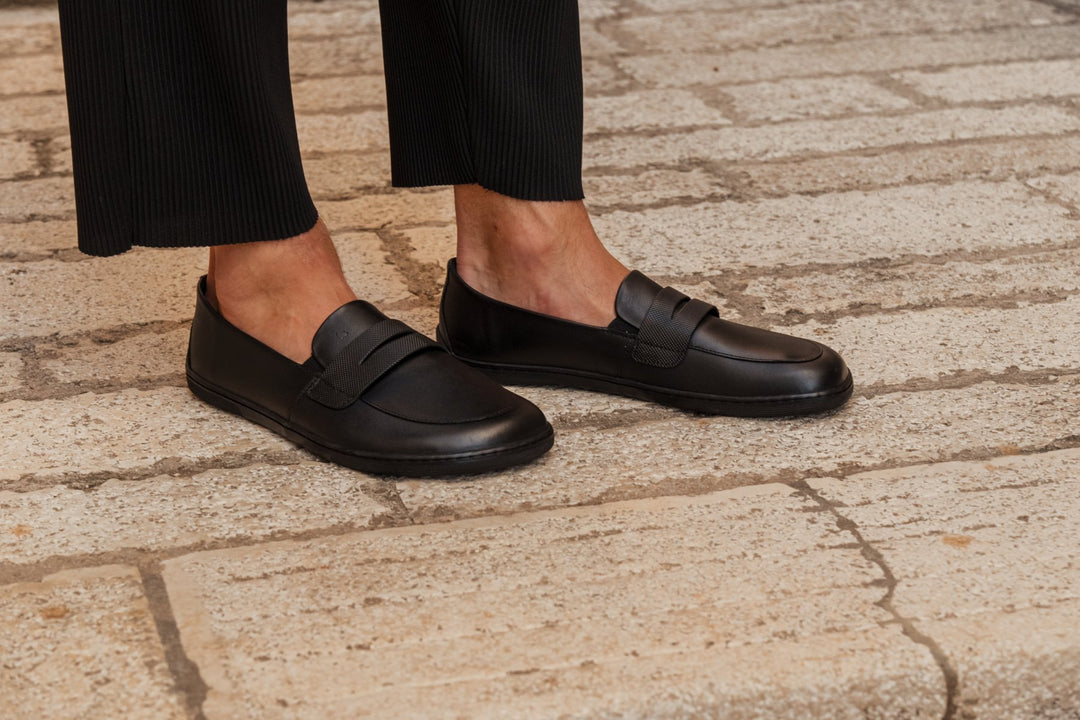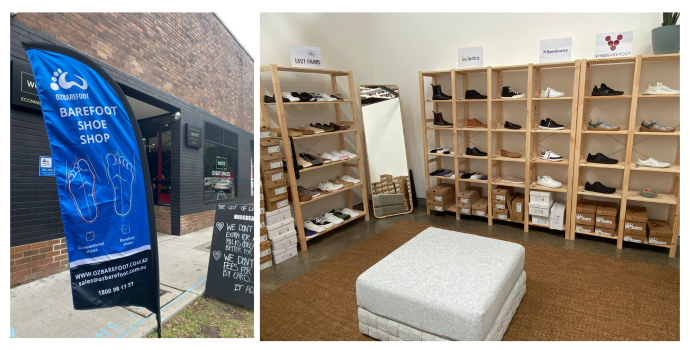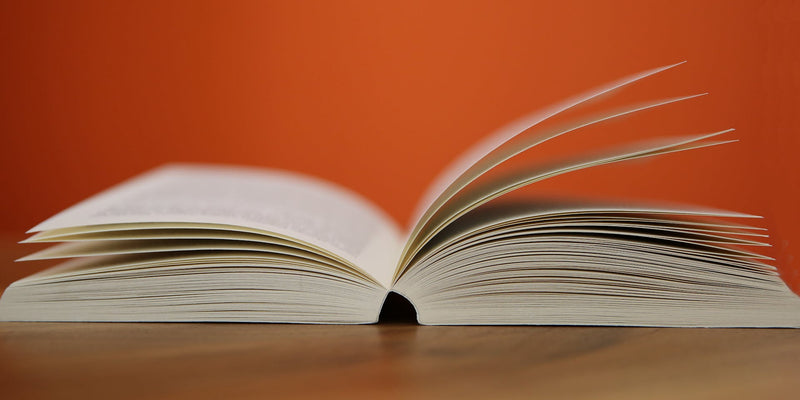Barefoot shoes have been around since the early 50s when Japanese runner Shigeki Tanaka won the Boston Marathon in 1951, wearing only canvas shoes that were little more than socks.
It’s also no secret that we Australians love going barefoot so much that even the BBC commented on it in a news item in 2022.
At Ozbarefoot, we love the look and feel, but we're all about the evidence too.
Today, we'll take a look at the pros and cons of flexible barefoot shoes for gym exercise and whether you should always have a pair in your gym bag or if it's one place where you're better off training with something more conventional.
Disclaimer
Before we begin, let's be clear: we are not doctors, therapists, or sport scientists.
We love our barefoot gear, and we love exercise, but if you have any medical issues or doubts, do not rely on this or any other content you find on the internet; consult with a qualified medical professional in your area.
Having said that, we'll be skipping the bro science and looking only at the pro-science in this post, so let's crack on!
Not all Barefoot Shoe Options are Created Equal
Some barefoot shoes are better for everyday wear, walking, running, and mobility training, some for climbing and leisure, and some for lifting, strength, and gym workouts.
Among the various minimalist footwear exercise options on the market, Vivo is the one that puts the most emphasis on gym workouts, offering a variety of flexible shoes that adapt to your natural foot movement, so we’ll focus on them today.
Not only do they feel great with options for precisely the right amount of cushioning for both indoor and outdoor workouts, but they also look banging when you're going to and from the gym or chilling after your sets are done.
If you don't have time to change into something else, want the barefoot effect beyond the gym, or like to travel light with less extra gear, you can also wear these as part of your civvies, and no one will be any the wiser.
Check out our full range of Vivo shoes here.
Five Potential Benefits of Barefoot Shoes for Training Use
1. Improved Balance and Stability:
Human beings evolved to move without the benefit of the restrictive, ultra-cushioned, and chunky footwear most of us wear for the majority of our active lives.
Thick, cushioned soles separate us from the ground and make it harder for us to interpret feedback from our nervous system, trying to tell us where we should be adjusting our focus and balance. In addition to improving balance, barefoot shoes can also enhance ankle mobility, which is crucial for exercises like squats and lunges.
Some exercises require this feedback more than others, but whatever the exercise is, a thinner sole will allow you more of this direct feedback and improve your ability to adjust to shifts in weight and position.
The additional space for your toes allows them to splay out and support your balance as nature intended.
If you've seen those viral pics of indigenous people's feet, you'll know what we're talking about. Toes are meant to spread out to widen your base and make you more stable.
Any exercise where you are standing, particularly if you are carrying weight, requires stability.
If you're doing core work, crunches, bench presses, and curls, you won't need them so much.
If you're doing squats, bent over rows, deadlifts, weighted lunges, or kettlebell work, you'll feel that close contact with the ground right away, and you'll notice how your toes begin to spread out in a wide toe box shoe to give you more balance. The wide toe box in barefoot shoes contributes to better stability and balance, especially during weight-bearing exercises.
If dancing is your thing, or you've taken up a Zumba class, you'll appreciate that close contact with the ground, and over time, once your feet and ankles are accustomed to the lack of support, we predict you will love the barefoot gym shoe experience.
2. Enhanced Foot Strength:
The consensus is that with all that effort to spread out the toes in the absence of standard cushioning from conventional gym workout shoes, your feet work harder.
Trust us when we tell you that you'll feel it after a session or two in the gym, just walking around, you'll feel that workout your feet went through.
But why, you ask, would I care about having strong feet?
Good question. If you've ever strained a ligament in your ankle or foot, had problems with your foot arches, or developed plantar fasciitis, you'll know all about it when you can't put any weight on your foot, and half your training routine is torpedoed.
Even if you're not planning on competing in Australia's National Strongest Foot Competition, the arguments for preventative health and foot strength are compelling. So, if you're stretching your feet at all those crucial weak points, you'll be less likely to have an injury when you are lifting, jumping, doing weighted calf raises, etc.
That kind of injury prevention and improved recovery time is worth its weight in gold to every fitness enthusiast who hates being deprived of their precious gym time due to injury.
Did you know that a 2012 study showed that up to 79% of runners get injured every year in the United States? This means that if you escaped without injury in the last 12 months, you're in the minority, and you should count yourself lucky.
Some studies have shown that barefoot running helps to minimize injury, so in addition to a proper warm-up and cool-down routine before and after every run, we recommend looking into the use of barefoot running shoes to keep your risk of injury as low as possible.
3. Better Posture and Alignment:
Posture is crucial when it comes to musculoskeletal health, and your mom was right when she kept telling you to sit up straight and stop slouching when you were a moody teenager.
Tall folks out there who habitually need to stoop or those of us who sit at desks or in vehicles every day for hours at a time know all about postural imbalances.
Now look at your shoes.
There might be a heel at the back, then a tapering down to the toes. The lift from the heel causes you to shorten your calves and rise up on the balls of your feet. Over time, this may potentially lead to lower back pain and other issues.
Meanwhile, your toes are crowded together, restricting circulation and narrowing your base, which may cause you to find your balance in sub-optimal ways.
If you're wearing running shoes, while all that cushioning is great to protect your joints if you are pounding the road, for everything else, it's like walking around on pillows.
Strip your feet down to the bare minimum, and you'll be standing as nature intended. Your heels drop down, your toes spread out, changing the way you walk and stand and bringing your posture back to the way you were meant to be.
You stand taller with your joints aligned and in the ideal position to improve natural standing posture and natural movement.
Now imagine your sport is weightlifting, and you are holding this unhealthy posture with a PB load of who knows how many kilos in a squat. Any postural issues will be magnified, and who knows what possible injuries you might incur.
All Vivo shoes have zero drop, meaning there is no heel and thus no forced misalignment through the lower leg with knock-on effects of pelvic tilt and potential lower back.
It's important to note that not everyone will experience improved posture or reduced pelvic tilt by switching to barefoot shoes, and in some cases, it might could exacerbate existing issues if the transition isn’t managed properly. That's why it is crucial to transition carefully and consult with a professional.
4. Injury Prevention
In 2012, Altman and Davis of the University of Delaware conducted a review of studies on the effects of barefoot running vs shod running. They found that forefoot strikers have fewer injuries compared to heel strikers.
This is significant because barefoot equipment encourages you to use forefoot striking while running. Although more research needs to be done, there's a lot to suggest that a barefoot option can reduce your injury time, and for what it's worth, that’s exactly what we've experienced ourselves, and it's why we love the Vivo brand.
Whether you're using the treadmill in the gym or you're on a running track outdoors, it's worth exploring this option, particularly if you are prone to recurrent injury.
But do not forget, transitioning to barefoot shoes requires a gradual adaptation period to avoid injuries such as stress fractures or plantar fasciitis, especially for those accustomed to cushioned footwear.
5. Increased Sensory Feedback:
Barefoot shoes have usually thin soles, allowing you to feel the ground beneath your feet, which enhances your proprioception.
Proprioception refers to the ability of the body to perceive itself, its position, and its location. The central nervous system takes care of this, and many key proprioceptors related to balance are located in your ankles to help keep you upright and maintain correct foot placement.
When you're working out, you don't have time to pay attention to every single micro movement as you maintain good form during exercise. Think weighted lunges, for example, with a kettlebell on each shoulder as you step back and forth.
As your weight shifts and your foot hits the ground each time, with fatigue building, you'll need to depend on your body's constant, almost instantaneous reactions to every change, particularly when you are on one foot.
Barefoot shoes give you closer contact with the ground, so you will potentially be less likely to mistake the cushioning in your trainer for something on the floor. This can save you from tipping over, landing awkwardly, or pulling a muscle through poor form.
Some Potential Drawbacks of Barefoot Shoes in the Gym
a) Lack of cushioning
The biggest downside of wearing barefoot shoes for gym exercise is, of course, the lack of cushioning. This will impact some more than others, so if you're doing a lot of HIIT with plyometrics or other activities that involve a lot of foot-to-ground impact, there's a strong case for using footwear with more support.
b) Back and joint issues
If you have a history of back or joint issues, then number one, you might need to skip the plyometrics and long-distance running in favour of more appropriate activities.
If you believe you can engage in these without injuring yourself, it's probably best to err on the side of caution, and unless a medical professional advises you otherwise, have more cushioned shoes available for those days when you are doing that part of your routine.
c) Unfamiliarity
The same goes for newbies to the world of barefoot exercise. Like any other new activity, break yourself in slowly. Don't go running any marathons or doing monster supersets of squats and deadlifts with your new barefoot shoes until you have used them for shorter runs and with lighter weights.
d) The Adaptation Period
We recommend breaking in your new barefoot shoes gradually over time, even if you are already physically active, before incorporating them into any strenuous running or lifting routine.
Although your shoe won't need the conventional breaking-in for comfort that a regular shoe does, your feet will need that time to adjust.
Here’s our best advice on transitioning to barefoot shoes so you get the best results in the shortest amount of time.
e) Limited Protection
If you work in an office or other indoor environment, then you might, over time, build up the strength in your feet to wear barefoot shoes virtually at all times. But if you work in a factory, in an unpredictable or dangerous environment where you need hard shoe protection, you need to be sensible and wear the appropriate footwear.
As much as you love your new barefoot shoes, think safety first.
Did you know that wearing minimalist barefoot shoes for six months, even if you are not actively training but just walking around during your daily activities, can increase foot strength by up to 57.4% in the general population?
A study published in Nature in 2021 came to this conclusion and is one of the strongest indications that barefoot minimalist sportswear can have direct, measurable health benefits.
Which Types of Workouts Are Best Suited for Barefoot Training Shoes and Sneakers?
There's virtually no limit on what you can do with your barefoot shoes, barring some very specific sports where you'll need protection for your feet.
In our experience, these are some of the best workouts to use barefoot shoes
- Weightlifting and powerlifting
- CrossFit training
- Kettlebell workouts
- Yoga and Pilates
- Zumba and other dance classes
- Treadmill running and all general gym equipment
- Circuit training
- Calisthenics
- HIIT training
- Primal movement
However, for high-impact activities involving a lot of lateral movement (common in dance classes), the lack of support in barefoot shoes could increase the risk of injuries like ankle sprains. That's why it is important to choose the right type of barefoot shoes specifically designed for primal movement.
Research on barefoot shoes is ongoing, and while some studies suggest benefits, others highlight potential risks, especially for those with certain foot structures.
How to Choose the Best Barefoot Shoes for the Gym?
Whether you're diving into your first pair, starting a new barefoot activity, or shopping for a specific set of training and fitness needs, we've got you covered with our curated range of Vivo barefoot shoes for training. Vivo is one of the best barefoot shoes brands when it comes to training shoes and barefoot sneakers.
Vivobarefoot Motus Strength

For high-impact training like road running, HIIT, or anything involving plyometrics, we like the Vivobarefoot Motus Strength (men's) and (women's).
Vivobarefoot Primus Lite Knit
The Vivobarefoot Primus Lite Knit (women's) and (men's) snekers are ideal for strength training, light running, and animal flow activities.
Vivobarefoot Primus Lite III
Check out the Vivobarefoot Primus Lite III ( men's) and (women's) gym trainers if you're looking for the perfect all-around training shoe, including CrossFit, running, weight training, and more.
More about our selection of barefoot trainers in the article: Our curated selection of best barefoot gym shoes
But don’t let us cramp your gym style.
Go ahead and browse all of our beautiful, highly functional barefoot training shoes right now and find what works best for you today.
Do you already use barefoot shoes for gym training? Let us know in the comments how they're working out for you. And get in touch if there's anything about your favourite training shoes that you would like us to address in the next post.
Sources
Learn more about the benefits of working out with barefoot shoes
Scientific studies:
Daily activity in minimal footwear increases foot strength
https://www.nature.com/articles/s41598-021-98070-0
The risks and benefits of running barefoot or in minimalist shoes
https://www.ncbi.nlm.nih.gov/pmc/articles/PMC4212355/
Barefoot running: biomechanics and implications for running injuries
https://pubmed.ncbi.nlm.nih.gov/22965347/
Metabolic cost of running barefoot versus shod: is lighter better?
https://pubmed.ncbi.nlm.nih.gov/22367745/
Going Barefoot Is Good for the Sole
https://www.scientificamerican.com/article/going-barefoot-is-good-for-the-sole/
Barefoot running, shoes, and born to run
https://sportsscientists.com/2011/06/barefoot-running-shoes-and-born-to-run/
From the manufacturers:
Science from the people who make the shoes
https://vivobarefoot.com.au/pages/science
5 Reasons to go barefoot in the gym
https://vivobarefoot.com.au/blogs/news/5-reasons-to-ditch-your-gym-heels
Hiking with Vivobarefoot
https://vivobarefoot.com.au/pages/hiking-barefoot












